Archive
Nader Rides Again
According to Matt Groening’s Love is Hell, there are nine types of girlfriends, including “The Bosser.” The advantage to this type of girlfriend, the book says: “Often right.” The disadvantage to the Bosser, aka Ms. Know-it-all and the Sarge: “Often right, but so what?”
Before going to see Ralph Nader speak last night, the Bosser came to mind. In the past few years, America’s impatience with and, mostly, avoidance of Nader reflects that same “so what” attitude. And you could argue Ralph has no one to blame but himself. He could have been content to go down in US history as the greatest crusader against corporate malfeasance ever, the best friend consumers ever had, whether they realized it or not. But no. Nader had to run in 2000, convincing many people, mostly Democrats, that he was more concerned about himself than with defeating George W. Bush (and we all know how swell that turned out). To make things worse, he ran again in 2004. And, my god, is that — yes, oh yes, I mean, oh no, there he goes again! Another run in 2008.
With all those campaigns, Nader looked like he was shooting to be Eugene Debs, but without the votes, or Norman Thomas with only slightly better name recognition.
Before the talk, I scribbled in my notebook, on a variation of the Bosser’s down side: “Right, but irrelevant.”
Boy, was I wrong.
Full disclosure: I have always admired Ralph Nader. His doggedness in the face of dirty tricks as he tried to expose GM, the way he inspired young people to expand on his work with Nader’s Raiders, and even his life story, the American Dream fulfilled — as long as the Dream includes not striking it rich, and being vilified for most of your life. I had heard Nader speak before, seen him on TV, read his articles, voted for him in ’96 (yes, ‘96, when the moral vacuum that is Bill Clinton was already sucking. And before the other sucking.)
Nader proved last night that he is still relevant, if only we’ll listen. He was in New Haven to promote his book “Only the Super-rich Can Save Us!,” an odd entry into fiction writing. Odd because he creates fantastic events for a team of real-life superheroes, whose not-so-secret power is their great personal wealth and willingness to use it and their celebrity status for the common good. The characters include Warren Buffet, Paul Newman, Ted Turner, Bill Gates Sr., Bill Cosby, and – talk about left field – Yoko Ono. Odd also because the massive book seems to contain some pretty sophomoric satire (an evil right-wing radio host appears as Bush Bimbo). And odd in how Nader described the book; when he referred to the characters’ actions, it was as if they really did these things, in real life, and not just on the pages of the book.
But the book is just a steppingstone for spreading the word on Nader’s real goals: more citizen involvement in the political process, particularly as watchdogs over the 535 members of Congress. Getting the money, from the superrich and others, to set the oversight procedure in place. And, at the heart of all his actions, reclaiming the political process from corporations. It’s corporatism, Nader believes, that makes the Republicans and Democrats largely interchangeable (outside of some key social issues), given their shared reliance on PACs and heeding the views of lobbyists over voters.
Listening to Nader recount the current political evils, he comes across as something of a gloomy Gus, with no reassuring proclamations of America’s inherent greatness or its “elect” status under the watchful eye of the one true God. Well, no wonder nobody wants to vote for him. But he calls “Only the Super-rich” a practical utopia. What seems like gloominess, if you value social justice over the unrestrained quest for profits, is just reality. And Nader still believes justice can be served, corporate greed tamed, if citizens will put down their iPhones, step away from the screens of all kinds, and get involved. Small numbers of people, with vocal and targeted efforts, can make a difference.
Along with that idealistic streak is a genuine sense of humor, which helps temper the arrogance that can also emerge. The new book has “historic importance,” he told the 75 of us crowded into the basement of Labyrinth Books. It’s filled with humor, he assured us, which judging from his presentation I don’t doubt, though the broad parody in the novel might get a little wearying. And though Nader can come across as all brain and no soul, his tales about his immigrant parents and the lessons they taught him, the challenges they laid down (are you going to believe, or are you going to think?) resonate on a personal level. He has what he says all reformers have shared: the fire in the belly. At times that has fueled real change, certainly in his case. Today, though, the fire doesn’t spread far enough to spark others to do the hard work Nader sees ahead.
Leaving the bookstore, I had to change my assessment. Ralph is right, and he’s not irrelevant. He is more relevant than ever. I do think he and his supporters have an almost-impossible task, trying to shame the passivity out of even the progressives who know he’s right. Because I think history will show he is, just as he was right to take on GM. Corporate power has corrupted constitutional government in the United States. That, along with the tendency in some humans to feather one’s nest, look for loopholes, amass power, rather than serve the common good. I don’t know if I share his optimism that we can make huge changes. I’m glad he’s out there, still, saying what needs to be said. What he so passionately believes. I hope history books treat him better than the media and so many of his contemporaries do. But not many of us like to hear someone who’s right talk so much, remind us that deep down we know he’s right, but we’d rather buy a new HD TV, or forget buying, we don’t even know if we can pay the mortgage. In good times and bad, nobody roots for the Bosser.
Stars Over New Haven
For a few hours in September 1969, New Haven was Hollywood East.
I’d like to say, “And New Haven has never been the same since,” but that would be a lie. One thing remains true: New Haven functions as a semi-interesting city, exists at all, only because of Yale. And it was Yale that offered a 40th anniversary look back at the star-filled night in ’69, when Butch Cassidy and the Sundance Kid came to town.
The 1969 event was the film’s premiere, attended by the two stars, Paul Newman (bearded and almost hippie-ish above) and Robert Redford, along with Joanne Woodward (bottom right) and Barbra Streisand. Thousands of people lined the street outside the old Roger Sherman/Palace Theater, hoping to catch a glimpse of Hollywood’s glitterati (decades before the phrase was coined). The opening event was captured on film, and some clips from it were shown before the anniversary screening of Butch Cassidy last week. The man responsible for the ’69 premiere, and the subject of the tribute that included the recent screening, was filmmaker George Roy Hill. A Yale graduate, Hill had arranged the New Haven opening as his own tribute to his alma mater.
(Yale tidbit: Newman also graduated from the university, the Drama School, and said after the premiere that he was “the campus drunk who made it.”)
At the anniversary event, scriptwriter William Goldman spoke, saying he was watching Butch Cassidy for only the second time since its release. The creative team of Hill and Goldman represented some of the cinema world’s elite. Hill had made his name directing live TV dramas before moving to Hollywood (and after two stints as a Marine pilot). He made a few movies before his iconic western, but Cassidy was the one that launched him into the stratosphere of filmmaking. He was nominated for an Oscar for that film, and finally won for The Sting, the even-more successful (at the box office, anyway) reuniting of Newman and Redford.
Goldman has written in just about every imaginable genre, always finding success, though he’s best known for his film scripts and two memoirs about life in Hollywood. He won an Oscar for Cassidy and a second for adapting All the President’s Men for the big screen. With Cassidy, it’s claimed, he invented the “buddy pic.” Goldman also shook up the conventions of the Western film. Heroes who run from conflict? Who (spoiler alert, if there’s actually someone who has not seen the film) die in the end? Hill’s direction was just as original, with the montage of photos during the New York sequence – a technique borrowed from documentaries – a contemporary pop song plunked into the middle of a Western, and the freeze-frame and pull-back on the last shot.
Goldman spent eight years researching the lives of his two heroes and Etta Place, the woman who joined them on some of their adventures. The specially hired posse to track them down, Sundance’s unerring accuracy with a six-shooter, the trip to Bolivia – all true. (Though Goldman, of course, took some license; somehow I doubt every moment of the bicycle scene is from life…) Goldman also offered tidbits about the history of the making of the film. Newman signed on first. He read an early draft of the script and told Goldman to let him know if/when he revised it. Newman, for a time, considered the role of Sundance, with Jack Lemmon (?!) as a possible Butch. Then Steve McQueen was suggested for Sundance, with Newman taking Butch. The deal fell apart, as the respective agents could not agree on billing.
It’s hard to imagine McQueen in either role, delivering the humor or subtle facial gestures Newman and Redford do, and which provide much of the film’s delight. On the whole, it stands up well after 40 years, with the amazing location scenery a huge plus. Less so is Katherine Ross. Goldman raved about her beauty (yes) and her acting (ummm….). She had already made a name for herself in one of the other great ’60s movies, The Graduate. Newman, too, was already an A-list actor before Cassidy. For Redford, the movie shot him off to stardom.
Goldman was effusive about Newman, as both an actor and humanitarian. Of course, Newman’s signature philanthropic effort, The Hole in the Wall Gang Camp, takes its name from Butch’s gang in the movie. (For more on the ongoing charitable efforts funded by Newman’s Own, Inc., go here.)
The weekend’s tribute to Hill also included a showing of the documentary, The Making of Butch Cassidy and the Sundance Kid. In another bit of history perhaps not widely known, it was the first “Making Of…” film. The work is an award-winner too, having copped an Emmy for Best Television Documentary, and it’s now packaged with the DVD, allowing easy access to a great moment in film history.
[While doing some research for this post, I came across an Internet rumor from earlier this year: Tom Cruise plans to remake Butch and Sundance with him and John Travolta in the lead roles. Sweet Jesus, in the name of the nine Muses and all that is good and true, let this just be a rumor! We still have Hill and Goldman’s film, Newman’s and Redford’s performances, and that’s all we need.]
The “Unexpected” War?
Let’s get this out of the way right off the bat: What follows is totally intellectually dishonest. I’m going to take a swipe at a book I haven’t even read, basing my comments on a few points in a NYT book review.
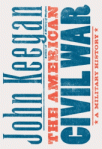 The book is The American Civil War: A Military History, and the author is British military historian John Keegan. Judging from his lengthy and wide-reaching list of works, Keegan knows his way around redoubts and fusiliers and billets. I would never question him on any assertion about tactics and strategy. But one quote from the The American Civil War, cited in the Times review, kinda made me stumble a bit:
The book is The American Civil War: A Military History, and the author is British military historian John Keegan. Judging from his lengthy and wide-reaching list of works, Keegan knows his way around redoubts and fusiliers and billets. I would never question him on any assertion about tactics and strategy. But one quote from the The American Civil War, cited in the Times review, kinda made me stumble a bit:
“The American Civil War is one of the most mysterious great wars of history, mysterious because unexpected…”
Unexpected?
The division slavery engendered was no mystery to American leaders. Certainly not in the decades before the war. And even back to the Constitutional Convention, with the disagreements slavery stirred there, no one could have been too surprised by conflict of some kind, if not all-out war. Maybe some Americans thought a peaceful disunion could come. That was the term used during the 1840s, with secession eventually following it. And it wasn’t just proslavery Southern forces who talked about a split; some staunch abolitionists sometimes suggested a parting of the ways between the North and South would be better for everybody. But the majority’s desire for compromise and perpetual Union kept the country together for a time.
For a time. But after the anger stirred by the Fugitive Slave Act of 1850, and the violence in Bleeding Kansas, the caning of Charles Sumner in the Capitol, John Brown’s failed raid on Harpers Ferry – surely after all that few people were caught off guard by war? The 1850s saw deepening venom on both sides, and after 1856, a Northern president, James Buchanan, who seemed overly sympathetic to the slave-owing South, who was willing to cripple his own party rather than work for compromise, and who only got tough with the South after South Carolina had seceded in December 1860.
Was it unexpected that even a generally pro-South president would take action to preserve Federal property, once it came under threat from secessionists? Buchanan refused to turn over Fort Sumter. Of course, he took the easy way out and said he couldn’t without permission from Congress. Still, he was not going to give in, and Lincoln largely followed the plan he had laid out for resupplying and reinforcing the fort in April 1861. Although, once the firing started, Lincoln moved much swifter for all-out war than Buchanan would have – if he would have.
But maybe even Buchanan would have fought, or been pressured to fight, to keep the Union whole. Who knows? But whatever his feelings for states’ rights and the constitutionality of slavery, Buchanan was a Unionist. And he had thought since the 1830s that secession would split the country apart. Back then, he wasn’t sure if secession were legal; by January 1861, he declared it was not:
“No State has a right by its own act to secede from the Union or throw off its federal obligations at pleasure…even if that right existed and should be exercised by any State of the Confederacy the executive department of this Government had no authority under the Constitution to recognize its validity by acknowledging the independence of such State.”
So Old Buck, reviled by many then and now (he’s been called the worst president ever by some modern historians, and another lambasted his actions before the war as near treasonous), stated the case Lincoln would follow. Given that kind of thinking, and the strong feelings of the secessionists, how unexpected was the war that began three months later?
[Speaking of strong feelings, a Georgian expressed this view to his senator during the tumultuous debates over Kansas’s status: “If Kansas comes in as a free state, Buchanan will richly deserve death, and I hope some patriotic man will inflict it.”]
During my years of research, I’ve come across many selections from both Northerners and Southerners who feared an explosive split between the North and South, with slavery the fuse and keg all in one. And real scholars of the era before the war could probably make an even stronger argument against Keegan’s claim. You can say a lot of things about the Civil War – neither side was really prepared to fight it, no one thought it would be as long and bloody as it was. But unexpected? Hmm…
Jolting Bits of History
The recent passing of World Day Against the Death Penalty led to some personal reflections on capital punishment over at Crisis? What Crisis? It also got me thinking about some historical tidbits on the execution of the guilty (or presumed guilty).
I’m sure some of the fun facts about state-sponsored death are pretty well known: stonings in biblical times, crucifixion with the Romans (a particularly slow form of death, in some cases: the history books record guys chatting while waiting for their final breath, or even signing contracts — maybe a book deal about their experience), or being devoured by beasts in the arena. The French went high-tech, for the 18th century anyway, with the guillotine. In a good year during the Revolution (“good” being relative), about two thousands people got the big slice.
The death penalty came to America with the English colonists (not sure what the French and Spanish did in their settlements), and in 1612, Virginia called for executing grape thieves, among others (so says the Death Penalty Information Center, which has an informative history on the subject). The Pilgrims, influenced by both common law and the Bible, had a variety of capital offenses, including: treason; murder; everyone’s favorite, “solemn compaction or conversing with the devil by way of witchcraft”; arson; rape; and the deadly duo of sodomy and buggery (bestiality). In the capital cases, the guilty was, in a phrase I always find somehow quaint, “hanged by the neck until his body is dead.”
If death penalty fans thought the guillotine was a big improvement, they really got their rocks off with the electric chair. And who was one of its best-known proponents in the United States? The Wizard of Menlo Park, a guy who knew his way around a volt and an amp, Thomas Alva Edison. Ol’ Tom promoted the use of the chair in New York largely for business reasons. No, he wasn’t making the chairs. He was trying to show that AC current, a rival to the DC systems he was trying to install, was too deadly for residential or commercial use.
Imagine the scene: It’s 1888. Edison needs someone to spread the bad word about AC, largely the creation of his former employee, Nikola Tesla. The Serb now works for Edison’s business rival, George Westinghouse. The Wizard invites another AC opponent to conduct tests in his New Jersey lab. The tests involve electrocuting dogs, two calves, and a horse with AC current, as a precursor for using a similar system as a form of capital punishment. The process came to be called “Westinghousing,” and Edison did all he could to make sure AC current was used in the first electric-chair execution. That killing took place in New York in 1890, and by all accounts it was a horrific affair, with the condemned man surviving the first jolt. Despite Edison’s efforts, however, the better system won and AC went on to become the standard electrical current, for electrocutions and more benign uses.
Thankfully, as humans found more advanced ways to kill each other with legal sanction, a few wise souls began to argue against this barbarity. The call for abolishing the death penalty started during the Enlightenment, and by the 1840s, Michigan had eliminated capital punishment for all crimes except treason. Yet in the decades that followed, only several states stopped executions, and at times, social trends would lead states to reinstate them. Finally, by the mid-20th century, abolition seemed to pick up steam. Then the Supreme Court heard a number of cases, as death penalty opponents tried to argue executions were “cruel and unusual punishments” prohibited under the Eighth Amendment and its application to the states through the Fourteenth.
A major case came in 1972, Furman v. Georgia. In a 5-4 decision, the Burger Court struck down capital punishment laws in the 39 states then carrying out executions. But the judgment only dealt with laws that did not give juries guidelines or limits when deciding capital cases; it did not say capital punishment was always and everywhere unconstitutional (though in separate concurring decisions, Justices William Brennan and Thurgood Marshall said it was). Four years later, in Gregg v. Georgia, the Court said capital punishment is cool if state laws set standards for sentencing, taking into account such things as aggravating and mitigating circumstances.
So that’s where we are today in the good ol’ USA. Execution is fine, though a growing number of states are taking capital punishment off their books. New Mexico was the latest, earlier this year. Connecticut’s General Assembly voted to as well, but Governor Jody Rell killed (haha) the bill. Still, if you’re a death penalty foe, as I am, the numbers remain bleak: 35 states do allow capital punishment, along with the federal government and the military. The folks behind World Day Against the Death Penalty still have some work to do.
Hidden Historic Treasures
Non-historians tend to think of history as a dead thing – dead people, dead civilizations, maybe some dead languages (and yes, with the passing of Mr. Garcia lo those many years ago, even Dead Heads seem a relic of the past). But some exciting discoveries in the past few weeks shows why history truly is a living entity, both because new facts are discovered and new theories develop, based on those facts or simply the ever-changing ideological winds.
A few months ago in England, a metal-detector-wielding amateur scooped pro archaeologists with his stunning find of 7th-century Anglo-Saxon gold and silver items, a discovery worthy of front-page play in the NYT. The cache included intricately worked items that adorned weapons and clothing, and experts think they were prizes ripped from defeated foes during or after battle. Under British law, the finder is due a sizable chunk for his share of the valuable find – somewhere around $1.5 million, by the latest estimate. Not bad for a middle-aged bloke who was on the dole while digging through the dirt. And the historians say the trove shows the level of craftsmanship at work during the time, an era often called “the Dark Ages.”
Some historians are increasingly claiming that the label is a misnomer. Sure, the Roman Empire was gone in the West, and the Renaissance (even the “mini-Renaissance” of the 12th century) was hundreds of years away. But Europe did not collectively crawl under a rock and wait to be revived by Abelard, Anselm, and Bacon; Chaucer, Petrarch, and Giotto (or even Tinkers, Evers, and Chance). The monks of the British Isles and elsewhere wrote and created art. Skilled artisans crafted the tidbits recently found . And beyond the borders of the old Western Roman Empire, Byzantium and the Arab empires kept classical thought alive and, particularly with the Arabs, expanded on it. Not so dreary after all, unless you were a feudal serf, who, one book says, lived lives of “unrelieved drudgery.”
Of course, once the Renaissance did hit, you saw some sparkling scientific and artistic achievement, and the appearance of perhaps the greatest “Renaissance Man.” Another recent discovery put good ol’ Leonardo da Vinci in the news. I’m glad I wasn’t the guy who had to relay the bad news to the previous owner of La Bella Principessa: “Yeah, that work you sold for $19k – well, it was actually done by da Vinci, and it’s probably worth, oh, 150. Million.” And what was the telltale sign that it was the master’s work? A fingerprint. Evidently Leonardo often got his hands all over his work, and some high-tech sleuthing revealed that a print on the principessa matched one on a known da Vinci work. OK, aside from thinking, “That guy who sold it was a moron,” you have to think that it’s cool to have another work from one of the greatest minds of all time. You have to, damnit.
(In the interest of fairness, let me say this story could take a twist; the Time article cited above points to a counterclaim – from an art dealer who once sold the painting – that it is not a Leonardo. We shall see.)
Our third find of historical import comes from Syria, card-carrying member – albeit second string – of the Axis of Evil. Gee, don’t you miss those heady days of early Bush II, with those pithy sayings and talks of crusades? Appropriately enough, the new discovery relates to the Crusades, the real ones, back when the monotheists unabashedly bashed it out in the Holy Land. Archaeologists working at an old crusader fortress, the al-Marqab Citadel, found murals depicting scenes of heaven and hell. The citadel started as an Arab fort in the 11th century, came under Greek control, then ended up with the Western Crusaders during the 13th century (my source for this is sketchy…).
The murals, about 8 feet by 11 feet, are on the walls of a chapel inside the fort and represent images of heaven and hell. A little more detail, courtesy of MSNBC: “The panel depicting hell shows people being tortured inside a wheel covered with knives and others being hanged and burnt, said Marwan Hassan, head of the Department of Antiquities in Tartous. The one portraying heaven includes saints surrounded by light colors.”
The experts say the artwork is rare, since the Crusaders moved around a lot and didn’t have time to do much painting (and there was all that fighting stuff too). The murals should give insight into the mindset of the Crusaders – or at least the ones stuck on this godforsaken slice of Syria, far from the hustle and bustle of Damascus and Jerusalem. It’s probably the equivalent of doing National Guard reserve duty in Yankton, South Dakota. (I’ve been to Yankton. I might prefer Syria – at least you can get decent hummus and falafel.)
For all three discoveries, the research goes on, new info will come out. The History Nerd gets excited about finds like these, as you can tell. Long-lost letters and documents are cool too. Even the diaries of common folk, hidden away in an attic, can reveal so much about an era. So, start hunting through Grandma’s old trunks, and if you see a guy with a gray beard walking around the Connecticut shore with a metal detector, it might be me.
Holland on the Hudson
To complete this week’s totally unplanned explorers’ trifecta, let’s take a look at Henry Hudson. New York, Amsterdam, and history nerds everywhere have been celebrating the 400th anniversary of the English sea captain’s jaunt up the river that now bears his name. Hudson, of course, was not looking for a good knish or a papaya smoothie when he sailed into New York Harbor. He, along with many other European explorers of the era, thought he could find a northern route across North America to Asia, the much-longed for Northwest Passage.
Hudson’s river didn’t stretch quite that far, and his ship the Half Moon could only sail to present-day Albany before it had to turn back. But Hudson’s journey convinced the Dutch to start trading with the Indians of New York, leading to the settlement of Manhattan and the river valley up to Albany. And don’t forget that the settlers from Holland also brought with them ice-skating, pancakes, and going dutch on dates.
Hudson didn’t spend any time in Manhattan, not even to christen the parkway named for him. He soon returned to England and put together another expedition to search for the Northwest Passage. Earlier, he had tried to sail due north over the Arctic Circle to reach Asia. That trip ended in failure. This time, he reached what is now Hudson Bay, where his crew mutinied, forcing him, his young son, and a few others into a small boat. The captain and his small band died a frozen death as the mutineers returned to England. (Thanks to Russell Shorto and his wonderful The Island at the Center of the World for these details.)
A few years later, the Dutch began their commercialization efforts in earnest, hoping to stoke a profitable fur trade with the Iroquois and other tribes of the region. Robert Juet, who had served under Hudson on the Half Moon, told Dutch officials that the Indians “were seeming very glad of our coming.” Sure, Bob – because you left, too! When the Dutch finally put down roots, and the English followed, the tribes might have had a different take on this alien invasion.
Adriaen Block came after Hudson, scouting the region and claiming a good chunk of neighboring Connecticut for the Dutch. (The upcoming 400th anniversary – mark your calendar, it’s just five years away! – of Block’s reaching modern-day Hartford will stir even more worldwide attention than this year’s doings for Hank.
Sure.
Still, we have Block Island. And a typically woeful attempt at urban revitalization in Hartford named Adriaen’s Landing.) Block’s boat for his Connecticut excursion was actually built on Manhattan or neighboring lands, after his first vessel burned. Friendly Indians helped the Dutch through the winter, providing them with food.
The first Dutch settlers came in 1624 (or at least the Dutch sent them—most were Protestant Walloons), landing on Governor’s Island. Some split for Delaware and Connecticut, some went north along Hudson’s river, a few stayed put. From those humble beginnings sprung the city that never sleeps, and where probably the most lasting Dutch presence is in place names—Brooklyn, the Bronx, Staten Island, the Bowery, the Catskills. A Dutch-themed tour of Manhattan, however, tries to put the lie to that notion.
This post might have stirred some Hudson-mania; you might have thought of proudly wearing a Henry Hudson 400th anniversary t-shirt, to mark the start of the Anglo-Dutch influences that shaped the growth of the Grote Appel. Bad news — the Henry Hudson 400 Foundation sold out in September. But you can still raise a jenever to the old guy, maybe while planning your next trip to the wonderful city he never could have imagined rising out of the Indian villages he saw in 1609.
Just Leif’s Luck
Break out the lutefisk and lefse, give a solemn nod to Martin Luther, and pour another round of Linie Aquavit, because it’s Leif Eriksson Day!
Well, it was. But I guess I missed it. What with all the hoopla over Columbus Day. But there it is in the NYT, President Obama declared October 9 Leif Eriksson Day, just as presidents before him have since 1964.
Continuing our explorer’s theme, let’s take a look at the often-ignored Leif. The presidential proclamation calls him “son of Iceland, grandson of Norway.” Actually he was son of Erik the Red, and though Leif spent his early years on Iceland, it was Greenland that became his home, and the base for the expedition that makes him famous…uh, semi-famous, today.
No one talked much about Leif when I was in grade school. We heard plenty about Columbus, but not much about Leif and his journey to Newfoundland, where he became the first European to found a settlement in North America. (More on that later.) Of course, archaeologists didn’t find evidence of Leif’s presence there until the early 1960s. And let’s face it, as hard-working and ubiquitous as the Norwegians are (in the upper Midwest, anyway), they don’t carry the same demographic clout as the Italians, and they had a 400-year head start in ginning up the PR machine for Columbus. Kids might learn a little about Leif, but to the general population, he is still something of a mystery.
That’s too bad, because the Icelandic sagas depict Leif and his family as the stuff of a ratings-grabbing mini-series. And if there had been cameras in the 10th century AD to get them on a reality show — boffo! Dad Erik and his dad Thorvald were banished from Norway after a little bout of murder with some neighbors. Mayhem followed them in Iceland, which led to another banishment and Erik’s staking a claim in Greenland. Later, Leif’s sister Freydis seems to have masterminded a mini-massacre on Newfoundland (Vinland to the Norse), killing five women herself. According to one saga, she tried to hush up the affair with this threat: “If we are fortunate enough to make it back to Greenland, I will have anyone who tells of these events killed.” More blood-hungry berserkers than subdued Minnesotans, those Erikssons, eh?
At Erik’s little Greenland settlement, the Norse raised cattle and sheep. They also traded the ivory from walrus tusks, along with a few live polar bears, to the folks back in Europe. Leif, eager for adventure, set off to explore lands west of Greenland first spotted by Bjarni Herjolfsson, who, if he had had Leif’s spunk, would have led to our breaking out the lutefisk and lefse to celebrate Bjarni Herjolfsson Day.
Leif first sailed by Baffin Island, stopped briefly on Labrador, then came ashore for the winter on Newfoundland. There and nearby, the Norse found abundant salmon, grassy fields, and wild grapes or berries, which may have led to the Norse calling the region Vinland (vin can mean either “grapes” or “grassland”).
Leif returned to Greenland in the spring with tales of this verdant paradise. On a second journey, Leif’s brother Thorvald explored farther south, around Nova Scotia and New Brunswick. He also made contact with the Indians of the region, ancestors of the Innu and Beothuk. In the spirit of bonhomie that would mark future European contact with the natives, Thorvald called the Indians skraelings — “ugly people” or “weaklings,” take your pick. But the skraelings were strong enough to kill Thorvald, after he and his men attacked them first. And so a pattern was set in motion for the New World…
Another Eriksson brother, Thorstein, led the next Norse expedition to Vinland, hoping to bring his brother’s body back to Greenland. No luck. He soon died, and Thorstein’s widow Gudrid remarried and sailed with the next expedition, hoping to start a more permanent colony. After a year or two, fearful of more skraeling attacks, the Norse left this grassy land, much more suitable for farming and hunting than Greenland, but too far from the Norse there to make it safe.
No one knows when Leif died. He seems to have spent his last years as a leader of the Greenland colony. The Norse stuck it out there until around 1450, when Inuit attacks and colder temperatures either killed off the remaining Norse or drove them off the island.
The story of Red, Leif, and the family almost seems too fantastic, with the heroic sailing off for unknown lands, the building of a settlement out of nothing (hey, the Pilgrims got help from the Indians they met…), rivalries and retrievals of bodies. But the sagas and archaeological finds document it (leaving aside some of the holes and conflicting accounts in the written record). Leif has his day, though I doubt many parades. And of course, with the short shrift history gets in our schools today, in this era of mastery tests über alles, don’t expect too many kids to learn much of this story. But if you’re ever in Newfoundland, make a stop at the living history museum at the first European settlement in North America. And do raise an aquavit for ol’ Leif.
Christopher Who?
As thousands of New Yorkers line the streets for today’s holiday festivities, we’re reminded that green beer and corned beef and cabbage must be more significant than exploration, since so many more people turn out for the St. Patrick’s Day Parade.
Why don’t Christopher Columbus and his accomplishments get more respect on the day named for him? Maybe because some of the people slaughtered and displaced by the floodgate of slavery and settlement he opened are still none to happy about being “discovered.” Maybe because Italians who aren’t part of dysfunctional but somehow admirable crime families don’t register too much in the collective American psyche. I can’t explain the lower turnout for the Columbus Day Parade. But I will try to explain a little about who Chris was — and wasn’t.
First, a look at some of the myths and maybe-truths. Someone told me yesterday that Columbus was actually English. What? Maybe she meant Scottish, if the recent theory of a Spanish historian named Villalonga is to be believed. I knew there was some uncertainty about his birthplace, though he always gave Genoa the honor. In recent years, a small Piedmontese village called Cuccaro tried to lay claim as the birth site, hoping to draw tourists. The claim was largely discredited and the tourists stayed away. Some scholars have argued for Spain or Portugal as his true homeland. Plenty of documents from Genoa seem to back the captain’s own claim, though we have his son saying his father chose to obscure details of his roots.
Why? Perhaps because he was a pirate, as Villalonga argues. Perhaps because the explorer was part Jewish in a Catholic Europe that did not much like Jews. We know, thanks to Monty Python, that Columbus’s Spanish employers were not too keen on the unconverted Jews (though the Brits seemed unable to find much humor in the real Inquisition and so subjected a nice, old Englishwoman to the horrors of the comfy chair). Some scholars have argued for Columbus’s Judaic heritage. I would buy that, since conversions weren’t limited to Spanish lands.
So the details are cloudy. And some historians aren’t willing to give CC much credit for his voyages (there were four) of discovery. He didn’t “discover” anything, since plenty of people had lived for thousands of years on the lands he reached. His legacy, as noted above, is one of pain for the native peoples decimated by European colonization. And the Norse beat him to North America by almost 500 years. So maybe he doesn’t even deserve a parade, let alone one to match the kind St. Paddy gets.
But consider: open-ocean crossings in 1492 were not exactly the norm. No one, to his knowledge, had ever taken the route Columbus did. The captain, in a word he might have known, had cojones. He had three tiny ships and a crew that got a little uppity as the sailing dragged on with no land in sight. The honor of making the longest Atlantic voyage by a European ship maybe gave the sailor some bragging rights — but only if they made it back home to actually do some bragging. And for good or ill, the colonization of the Americas that Columbus unleashed, and the exchange that bears his name, did change the world. Peppers to Thailand and potatoes to the homeland of Scotland, horses to Mexico and beer to me — all possible because Columbus sailed the ocean blue.
Yes, Europe would have “discovered” the New World if Chris had never lived. But he did – whoever he really was, and wherever he came from – and he got there first. Maybe worth a halfway decent parade.

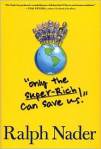

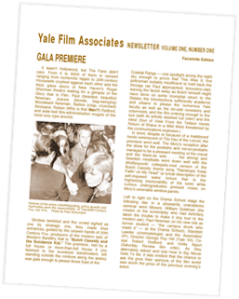

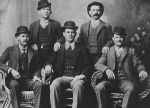
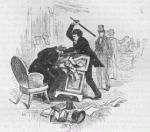
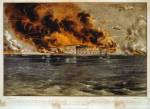


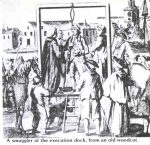

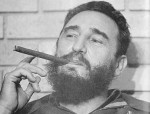














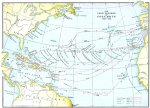
Recent Comments